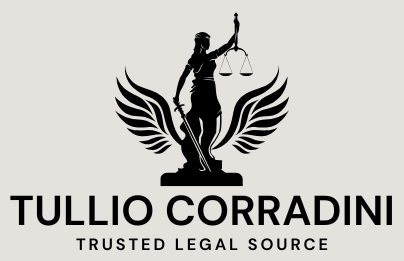
We’ve published ahead of about the Privette doctrine, which establishes a presumption that a hirer of an independent contractor delegates to the contractor all duty for workplace security. In other phrases, if a basic contractor hires a subcontractor, the subcontractor is entirely accountable for the protection of its workers.
There are two big exceptions to the Privette doctrine. The to start with, the Hooker exception, retains that a hirer may perhaps be liable when it retains command above any element of the impartial contractor’s get the job done and negligently workouts that retained handle in a way that affirmatively contributes to the worker’s damage. The 2nd, the Kinsman exception, retains that a hirer might be liable for accidents sustained by a worker of an independent contractor if the hirer realized, or should have known, of a hid hazard on the house that the contractor did not know of and could not have fairly found and the hirer unsuccessful to warn the contractor of the hazard.
The next circumstance, McCullar v. SMC Contracting, Inc. (2022) 83 Cal.App.5th 1005, mentioned the initially of these two exceptions, the Hooker exception, in the context of employee slipping from ladder positioned on an icy surface brought on by a standard contractor’s use of heaters in South Lake Tahoe, California.
The McCullar Case
Tommy McCullar worked for Tyco Simplex Grinnell, Inc., a fire sprinkler system subcontractor to SMC Contracting, Inc., the common contractor on a task identified as the Chateau at the Village in South Lake Tahoe, California. Under the parties’ agreement, Tyco agreed to “immediately accurate any and all unsafe functions or circumstances that are brought to its attention” and to “comply with all distinct protection needs promulgated by any governmental authority, including without limitation, the demands of the applicable state and federal Occupational Safety Wellbeing Act….” Further more, Tyco agreed to “conform to the security coverage of [SMC]” and SMC’s safety coverage stated, amongst other things, that “[s]ubcontractor supervisory staff will critique just about every do the job space prior to commencing work” and eliminate “[a]ny [s]afety hazards … prior to commencing perform.” SMC’s security policy also said that that subcontractors ought to deliver a security orientation for their workers, which need to involve the subsequent instruction: “Don’t operate unsafely or in unsafe atmosphere. Explain to foreman.”
Throughout the hearth sprinkler set up, McCullar arrived at the undertaking to obtain the ground lined in ice. The evening just before, SMC experienced turned on heaters in the challenge to help dry a fireproof coating. According to McCullar, the heaters melted the snow on the roof, the melted snow dripped on to the ground via openings in the roof where air conditioning models had been to be put in, and the h2o on the ground then froze into ice right away when the temperature fell down below freezing.
On looking at the ice, McCullar asked SMC’s superintendent what are “we … going to do about this ice issue”? But rather than remedy the issue, the superintendent stated that SMC “ha[d] to have the heaters on” to dry the fireproofing coating on the building’s steel beams. McCullar responded, “`Well, that’s fantastic, but what are we heading to do about the ice problem?’” “And at that level,” in accordance to McCullar, the superintendent “told me to go back to do the job and he turned all around and walked off.” Shortly right before speaking to SMC’s superintendent, McCullar also asked Tyco’s field superintendent “what he was heading to do about the issue we have with basic safety of all the ice on the ground.” But Tyco’s industry superintendent stated only, “`What can I convey to you, Tom. Get the position done.’”
McCullar then commenced to perform on the ice using a ladder and the results, as you may well envision, weren’t good. McCullar fell just after the ladder slid on the ice and he endured a shoulder personal injury that necessary surgery. McCullar later filed go well with against SMC alleging five triggers of action for negligence, negligence for each se, violation of a nondelegable obligation to preserve work floors in a safe issue, violation of a lawful obligation to manage a harmless office, and a decline of consortium claim.
Through the situation, SMC submitted a movement for summary judgment claiming that, underneath the Privette doctrine, SMC delegated its responsibility to be certain a safe and sound place of work to Tyco so McCullar need to appear to Tyco for restoration. The trial court agreed and granted SMC’s motion.
McCullar appealed.
The Appeal
On enchantment, the 3rd District Court of Enchantment defined that the Hooker exception to the Privette doctrine consists of 3 essential principles: (1) retained regulate, (2) precise workout, and (3) affirmative contribution:
“A hirer `retains control’ the place it retains a ample degree of authority around the fashion of general performance of the perform entrusted to the contractor.” Our Supreme Courtroom has emphasised that “[a] hirer may well be responsible for the existence of a hazard and even express an expectation that the contractor complete its operate without removing that hazard completely, and but leave the contractor enough flexibility to accommodate that hazard successfully in no matter what way the contractor sees healthy. In these types of occasion, the hirer does not automatically keep a adequate degree of manage above the contractor’s manner of carrying out the contracted work to represent `retained control.’”
“A hirer `actually exercise[s]’ its retained command around the contracted do the job when it will involve alone in the contracted work `such that the contractor is not totally absolutely free to do the work in the contractor’s have way.’ [Citations.] In other terms, the hirer should exert some affect in excess of the manner in which the contracted get the job done is performed.” “Unlike `retained management,’ which is glad exactly where the hirer retains simply the correct to turn out to be so concerned, `actual exercise’ calls for that the hirer in fact require itself” (ibid.), “such as by directing the way or solutions in which the contractor performs the get the job done interfering with the contractor’s decisions about the correct security measures to undertake requesting the contractor to use the hirer’s own defective devices in undertaking the function contractually prohibiting the contractor from employing a vital basic safety precaution or reneging on a promise to treatment a known hazard.”
Last of all, “`[a]ffirmative contribution’ indicates that the hirer’s workout of retained management contributes to the personal injury in a way that is not just by-product of the contractor’s contribution to the damage.” A hirer’s conduct satisfies the affirmative contribution necessity when “the hirer in some regard induced—not just unsuccessful to prevent—the contractor’s injuries-resulting in carry out.” (Ibid.) “A hirer’s perform also satisfies the affirmative contribution need where by the hirer’s exercising of retained manage contributes to the injuries independently of the contractor’s contribution (if any) to the damage.” (Ibid.) That would be real, for occasion, if “the hirer guarantees to undertake a specific protection measure, [but] then … negligent[ly] fall short[s] to do so.”
The Hooker exception to Privette is brought on only when all 3 of these concepts—retained manage, genuine exercising, and affirmative contribution —are pleased. Our Supreme Court in [Sandoval v. Qualcomm Incorporated (2021) 12 Cal.5th 256, 264] summed up these a few ideas this way: “A hirer’s mere authority to prevent or right a contractor’s unsafe tactics (retained manage) does not, without the need of far more, restrict the contractor’s delegated regulate in excess of the operate. But to the extent that the hirer exerts impact around the contracted get the job done such that the contractor is not entirely absolutely free to conduct the do the job in the contractor’s have way (actual work out), the hirer does limit the contractor’s delegated manage. Continue to, we impose a duty only the place that limitation by itself contributed to the worker’s damage (affirmative contribution), rather than the place that limitation incidentally produced an chance for the hirer to avoid the contractor’s injuries-producing conduct.”
As to McCullar’s carelessness assert, the Courtroom of Enchantment, whilst acknowledging that SMC’s conduct prompted ice to form and, hence, essential Tyco to get further security safety measures to account for the ice, stated that underneath the California Supreme Court’s choice in Gonzalez v. Mathis (2021) 12 Cal.5th 29, 45, “[o]nce an unbiased contractor gets aware of a hazard on the premises, `the landowner/hirer delegates the duty of personnel safety to the contractor’ and `a hirer has no obligation to act to safeguard the staff when the contractor fails in that job. . . .’” Further, described the Court docket of Appeal, under the Supreme Court’s decision in Sandoval, this presumed delegation of accountability is not overcome merely since the hirer negligently made the hazardous affliction, due to the fact when “[a] hirer may possibly be liable for the presence of a hazard and even express an expectation that the contractor accomplish its work without having removing that hazard completely, [ ] nevertheless leave the contractor enough flexibility to accommodate that hazard correctly in whichever manner the contractor sees suit.”
Consequently, held the Court of Attractiveness:
We conclude that Tyco not only experienced the authority to remove the ice, irrespective of whether by chipping the ice, melting the ice, or through some other suggests it also, as talked over, experienced the responsibility to take the required safeguards to guard its workforce from any hazard posed by the ice. And though Tyco did not physical exercise this obligation to stop McCullar’s injury, McCullar simply cannot maintain SMC liable for Tyco’s individual failure.
The Court docket of Enchantment held that McCullar’s remaining statements failed for related good reasons like his carelessness for every se declare. As to McCullar’s negligence for each se declare, dependent on CalOSHA’s laws observed at 8 CCR §3273, which demands slippery flooring to “be shielded against slipping by applying mats, grates, cleats, or other procedures which provide equal safety,” the Courtroom of Charm, citing the California Supreme Court’s decision in SeaBright Ins. Co. v. US Airways, Inc. (2011) 52 Cal.4th 590, 594, explained that when hiring an independent contractor, a hirer implicitly delegates to the contractor “any tort law duty [it] owes to the contractor’s workforce to comply with relevant statutory or regulatory needs.”
Conclusion
So there you have it, just since you caused it, does not imply you personal it, at the very least less than the Hooker exception to the Privette doctrine.











More Stories
Employers Beware: California Bill Could More than Double the Mandatory Paid Sick Leave Available to California Employees!
“Incidental” Versus “Direct” Third Party Beneficiaries Under Insurance Policies in Which a Party is Not an Additional Insured | California Construction Law Blog
Judge Calls Out “Human Rights Lawyers” Over Incompetence